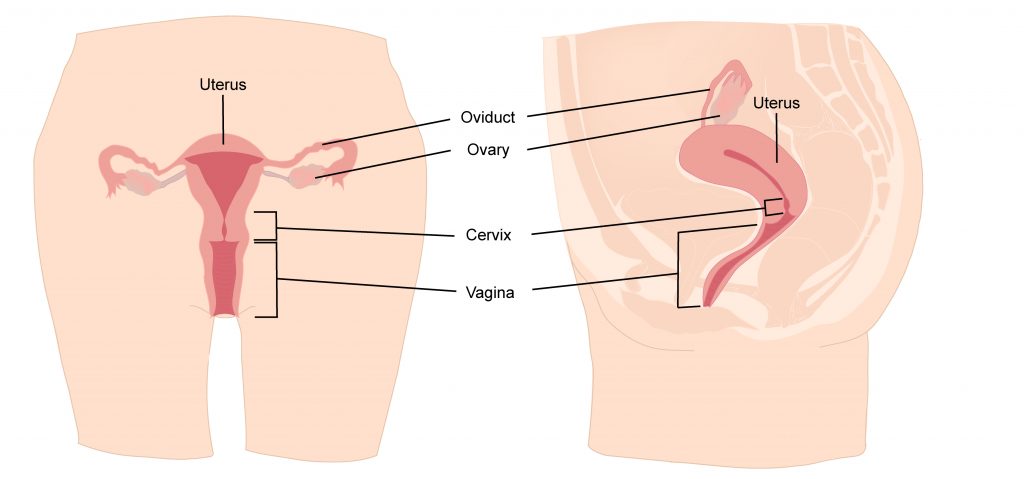1.5 Stating a Hypothesis
Cervical cancer is cancer of the cervix, the lower part of the uterus. Globally, cervical cancer is the fourth most common cancer in women; however, in developing countries, cervical cancer is the third most common cause of cancer death in women.
Where is the cervix?

What causes cervical cancer?
In the 1970s, some observations led researchers to suspect a connection between oral contraceptives (i.e., birth control pills) and cervical cancer. Thus, they developed a working hypothesis about the cause of cervical cancer as follows: oral contraceptives have a cancer-causing effect on the cells of the cervix.
Several population-level observational studies were conducted to detect whether cervical cancer was associated with the use of oral contraceptives. For example, Louise Brinton and her colleagues analyzed data on cervical cancer patients from 24 hospitals over a two-year period. These patients were compared to matched controls that were selected by randomly dialing telephone numbers to identify women that matched cancer patients in terms of age, ethnicity, and region of the country. Brinton and her colleagues interviewed 481 cancer patients and 801 controls, collecting information about health history, sexual behavior, and use of contraceptive.
Check Yourself

